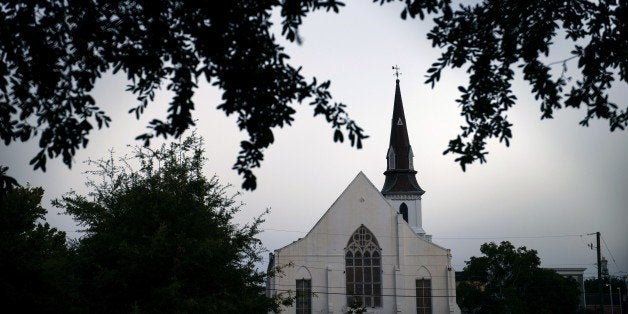
When 21-year-old Dylann Roof opened fire at the historic Emanuel African Methodist Episcopal (A.M.E.) Church in Charleston, South Carolina on Wednesday night killing nine worshippers, including its pastor, Reverend Clementa Pinckney, he struck at the very heart of black America. Established by Reverend Richard Allen, a former slave and Methodist preacher, the A.M.E. is the oldest black denomination in the country. Its roots lie in one of the first black religious and mutual help societies, the Free African Society founded by Philadelphia blacks in 1787. Like other independent churches and societies founded by newly free African Americans, it has a proud history of black protest and community activism.
In 1792, Allen and Reverend Absalom Jones, led a walkout at St. George's Methodist Church in Philadelphia. They had dared to pray in the front pews reserved for whites rather than in the segregated gallery constructed for blacks. Zealous church authorities had interrupted their prayers and forced them to rise to their feet. As the story goes, this unseemly incident was the impetus for the founding of independent black churches. In 1794, with black contributions and donations from the British abolitionist Granville Sharp, President George Washington, and the Pennsylvania Abolition Society, Jones's African Episcopal Church of St. Thomas opened its doors, boasting over four hundred members. Founded the same year, Allen's Mother Bethel Methodist Church was incorporated in 1796. Later Allen composed an "African Supplement" to proclaim his church's autonomy. In 1816, he issued a call to all black Methodists in the surrounding area. Delegates from Pennsylvania, New Jersey, Delaware, and Maryland, including Moses Brown from Charleston, South Carolina met and founded the African Methodist Episcopal Church in 1816, and Allen became its first bishop.
AME churches soon spread north, west and even to the south acquiring a large congregation in Charleston, South Carolina in the midst of one of the largest slave societies in the United States. In 1818, Reverend Brown, replicating Allen's and Jones' actions, led a walkout of black members from the Methodist church protesting the treatment of black burial grounds by whites and established the AME church in Charleston with four thousand members.
Right from the start, the AME, like other independent black churches, gave birth to antislavery protest. Allen and Jones were authors of early abolitionist pamphlets and petitions. Their "An Address to Those Who Keep Slaves and Uphold the Practice," reminded whites that slavery is "hateful... in the sight of God" and that "God himself was the first pleader of the cause of the slaves." The most potent challenge to slavery came from the AME church in Charleston. One of its founders and class leaders, Denmark Vesey, a literate black carpenter who had bought his freedom after winning a lottery, was implicated in a slave conspiracy scare in 1822. State authorities had harassed church members and used the conspiracy as an excuse to destroy the church. Its' ministers, Brown and Reverend Henry Drayton were forced to leave South Carolina. Brown became the second bishop of the AME on Allen's death. Black Charlestonians rebuilt their church until the city outlawed independent black churches in 1834. In a fitting coda, Robert Vesey, Denmark Vesey's son, helped rebuild the Charleston church in 1865, after the Civil War and emancipation. It was renamed Emanuel AME church, a name that it carries until today.
During the Civil Rights movement, the Emanuel AME Church of Charleston continued to be the site of black protest. In 1969, the South Carolina National Guard arrested the church's pastor and nine hundred others at a demonstration for hospital workers led by Coretta Scott King. The black church lay at the organizational base of the mass movement for black rights and equality in the south. With good reason, white supremacists and segregationist have targeted it, most infamously in the 1963 Birmingham church bombing that killed four young black girls. A resurgence of black church burnings in the south in the 1990s led the Justice Department to launch a civil rights investigation and civil rights activists volunteered to rebuild them. This latest attack on a black church is all too reminiscent of this tragic history.
Just a year ago, the city of Charleston finally honored Denmark Vesey with a statue after years of controversy when some conservative commentators labeled him a "terrorist." One might well paraphrase the great black abolitionist, Frederick Douglass, who asked, "Pray, tell me who is the barbarian here?" during the height of lynching in the post-Civil War South. On the 150th anniversary of Juneteenth or June 19, the day many of the enslaved celebrated as the day of emancipation, one might ask, Pray, who is the terrorist here?